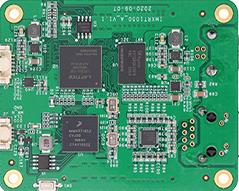As the complexity of the devices they carry increases, PCB design becomes more and more complex. For quite a long time, circuit design engineers have been doing their own design without incident, and then transfer the completed circuit diagram design to the PCB design engineer. After the PCB design engineer completes his work independently, he transfers the Gerber file to PCB manufacturing. factory. The work of circuit design engineers, PCB design engineers, and PCB manufacturing plants are all isolated from each other, and there is little communication.
With the increasing popularity of programmable devices in large BGA packages, as well as the widespread application of high-density interconnection (HDI) and timing-critical differential pair signaling, the use of such an isolated PCB design method will now bring Catastrophic consequences, while parallel development processes allow multiple development processes to proceed simultaneously, helping to ensure design success, avoiding delays, additional costs, and rework. This article summarizes the key principles of each stage of parallel PCB design.
The first step of PCB design is in the concept phase. At this time, the circuit design engineer should conduct a technical evaluation together with the PCB design engineer. This assessment should consider the following questions:
1. What devices are used?
2. Which package is used for the device? What is the number of pins? What is the pin configuration?
3. Based on the trade-off of cost and performance, how many layers of PCB should be used?
4. What are the target values of parameters such as clock frequency and signaling speed?

In addition, design engineers should also consider factors such as bus architecture, whether to use parallel or serial connections, and impedance matching strategies. When the impedance is not matched, reflections, ringing and other undesirable interference will occur.
Collaborative work
These considerations of PCB design raise a key issue in successful PCB design is communication, because PCB design is no longer a work of one person, but a teamwork between different groups of engineers. The main theme of communication runs through the entire PCB design process. The circuit design team must clearly communicate its design intent with the PCB design team. They must also participate in the premise that they have a clear understanding of what their PCB design tools can and cannot do. In the process.
With the increasing complexity of PCB wiring and the increasing signal speed, the collaborative PCB design method can be more effective than the traditional serial process. Separating the research and selection of components from other parts of the entire design process, and separating the schematic input, simulation, and placement and routing stages have always been common techniques. Therefore, it is best for design engineers to choose tools and processes that facilitate data sharing. This is the only way for design teams in different locations to take advantage of parallel work and shorten the entire design cycle.